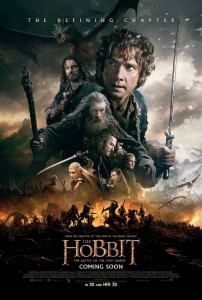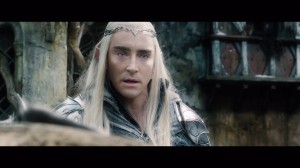 Brisbane tabloid The Sunday Mail sent writer Neala Johsnon across the pond to New Zealand in June 2013 for a stint on the set of The Hobbit during pick-ups. This article finally popped up in the paper’s mag last weekend.
Brisbane tabloid The Sunday Mail sent writer Neala Johsnon across the pond to New Zealand in June 2013 for a stint on the set of The Hobbit during pick-ups. This article finally popped up in the paper’s mag last weekend.
As The Sunday Mail — especially its longer, feature-style magazine articles — doesn’t really make its way online at all, here’s the article re-typed in full for TORn readers. Beware minor movie spoilers, there are a couple of new lines of movie dialogue below and more information about the situation in the ruins of Dale in the lead up to the final battle.
Hobbit’s road comes to an end
by Neala Johnson
The final chapter of Peter Jackson’s Hobbit trilogy is due for release on Boxing Day, bringing to an end his long journey into the fantasy world of author J.R.R. Tolkien.
While community groups and politicians argue about what tio do with Mount Crawford, the site of an old New Zealand prison on Wellington’s Miramar Peninsula, one resident knows exactly what to do — turn it into Dale, the glorious city of men that will lay in ruins by the time dragon Smaug and marauding armies are done with it in The Hobbit: The Battle of the Five Armies.
In June 2013, Mount Crawford is where we find Peter Jackson as he leads a 10-week block of “pick-up” shooting to capture the pieces needed to complete his epic Hobbit movie trilogy.
As well as the 60 stunt elves and humans, 35 orcs and 25 Lake-town residents Jackson is wrangling today, he’s shooting scenes with Lee Pace (elf king Thranduil), Sir Ian McKellen (the wizard Gandalf) and Martin Freeman (the hobbit Bilbo).
 Before calling action, Jackson offers a quick rundown: “This is in the middle of the battle of the five armies. The dwarves are cut off in Ravenhill, there are orcs heading toward them, so Gandalf is trying to find a way to get word to them…” He pauses and grins. “You’ll have to wait and see what happens.”
Before calling action, Jackson offers a quick rundown: “This is in the middle of the battle of the five armies. The dwarves are cut off in Ravenhill, there are orcs heading toward them, so Gandalf is trying to find a way to get word to them…” He pauses and grins. “You’ll have to wait and see what happens.”
With that, a horn blows to signal cameras rolling and snow (actually soap suds) begins to fall.
The elf and orc extras do battle before the camera pans to Thranduil surveying the body count. Gandalf enters and begs the king to warn Thorin’s dwarves before they’re “overrun”.
But the imperious thranduil wants only to claim a precious gem from the dwarf’s mountain stash: “I’m taking what I came for and leaving.”
After several run-throughs, Jackson moves on to the next shot.
“This is the tough yards now, trying to shoot this battle,” the director says. “This is where big movies become a real endurance test. There are a lot of balls in the air.”
For an instant, the giant of New Zealand filmmaking considers throwing it all in for something easier. “The idea of doing a little drama with people in a house is very attractive right now,” he sighs.
But it’s fair to say that, in the final stretch of the marathon 16 years it has taken to make two Tolkien trilogies, it is far too late to turn back.
The journey has been shorter, but no less momentous, for Freeman.
“It occurs to me that it is two and a half years since I came over here,” the Englishman says, nursing a cup of tea before starting work.
“In all that time, life takes twists and turns — death, loss, love, everything. If all of life is a journey of a kind, then yeah, it’s been a fair old chunk of a journey for me.”


